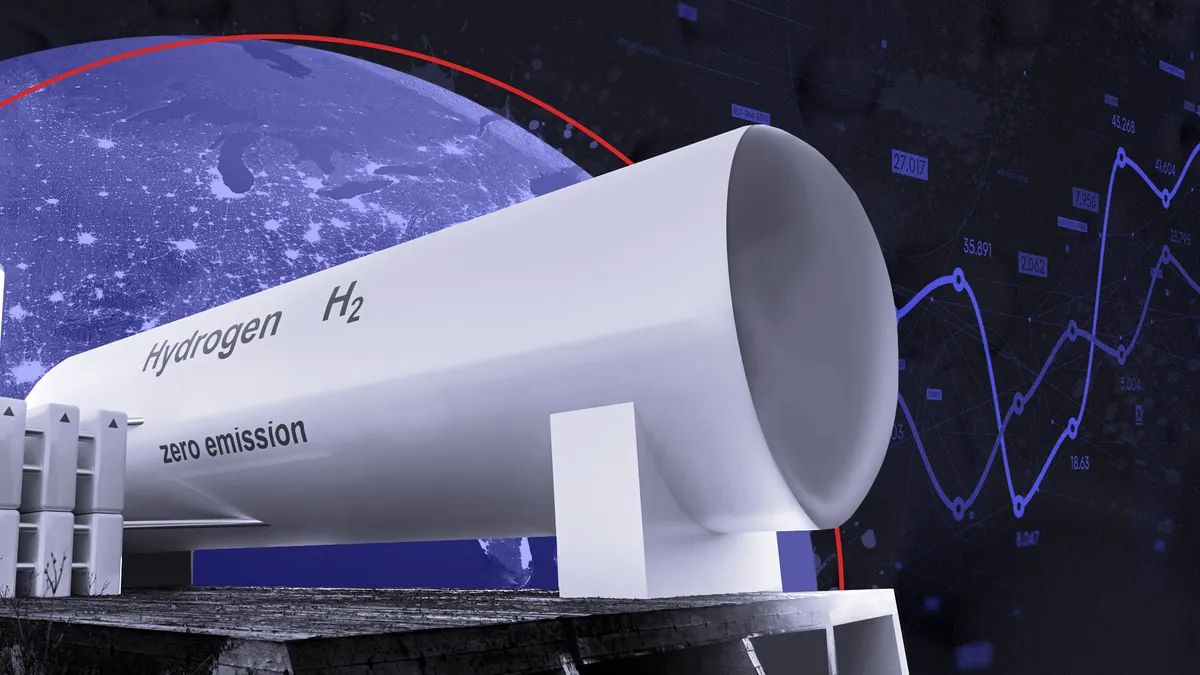Dive Brief:
- NiSource has launched a multi-phase hydrogen blending project with an initial pilot involving several model structures, a gas turbine, and a specialized hydrogen blending skid, the company said Oct. 5.
- The skid, which consists of a series of analyzers, valves and flow controllers, will ensure that the blended fuel maintains a consistent percentage of hydrogen in spite of fluctuations in use, said Erich Evans, director of strategy and risk integration for NiSource.
- The pilot will help NiSource test the safety and viability of using hydrogen blends in natural gas infrastructure and in commercial and industrial settings.
Dive Insight:
NiSource is joining the ranks of utilities testing hydrogen blends, but with its own twist. The company plans to use a specialized blending skid to control the mix of hydrogen and natural gas to fine-tune the fuel blending process.
When customers turn appliances on or off, it causes slight changes in the flow of gas that could in turn alter the composition of a blended fuel, Evans said. Knowing exactly what the gas they consume contains is critical for some customers — including commercial customers with specific heat needs, Evans said.
“As customers turn equipment on and off, the gas flow changes, so if you are pumping in a set amount of hydrogen, it might be 5% one minute and jump up to 15% because the gas flow drops. Or the other way around,” he said. To maintain a consistent fuel blend, he said, seemed “necessary.”
The blending skid, which NiSource subsidiary Columbia Gas of Pennsylvania built in partnership with EN Engineering, monitors the gas in the system to ensure a consistent mix of up to 20% hydrogen, Evans said. A control building directs gas and hydrogen valves on the input side of the system to open and close as needed to maintain the desired blend.
The initial pilot will take place in a controlled testing facility at Columbia Gas of Pennsylvania's Training Center in Monaca, Pennsylvania. The skid is currently connected to a system running a model home with standard residential appliances, three other structures outfitted with residential appliances, and a backup gas generator. But the scale of the pilot could expand and eventually include blending in a live gas system as the trial advances, Evans said.
The goal, he said, is to evaluate how the blended fuel performs in common gas appliances, and to determine how the mixed fuel impacts maintenance procedures like leak detection and repair. Future phases of the project will also test the use of hydrogen blending in environments such as factories and power plants, according to the company announcement.
Evans noted that the trial is not using clean or electrolytic hydrogen made from renewable energy because NiSource was unable to find a suitable supplier.














